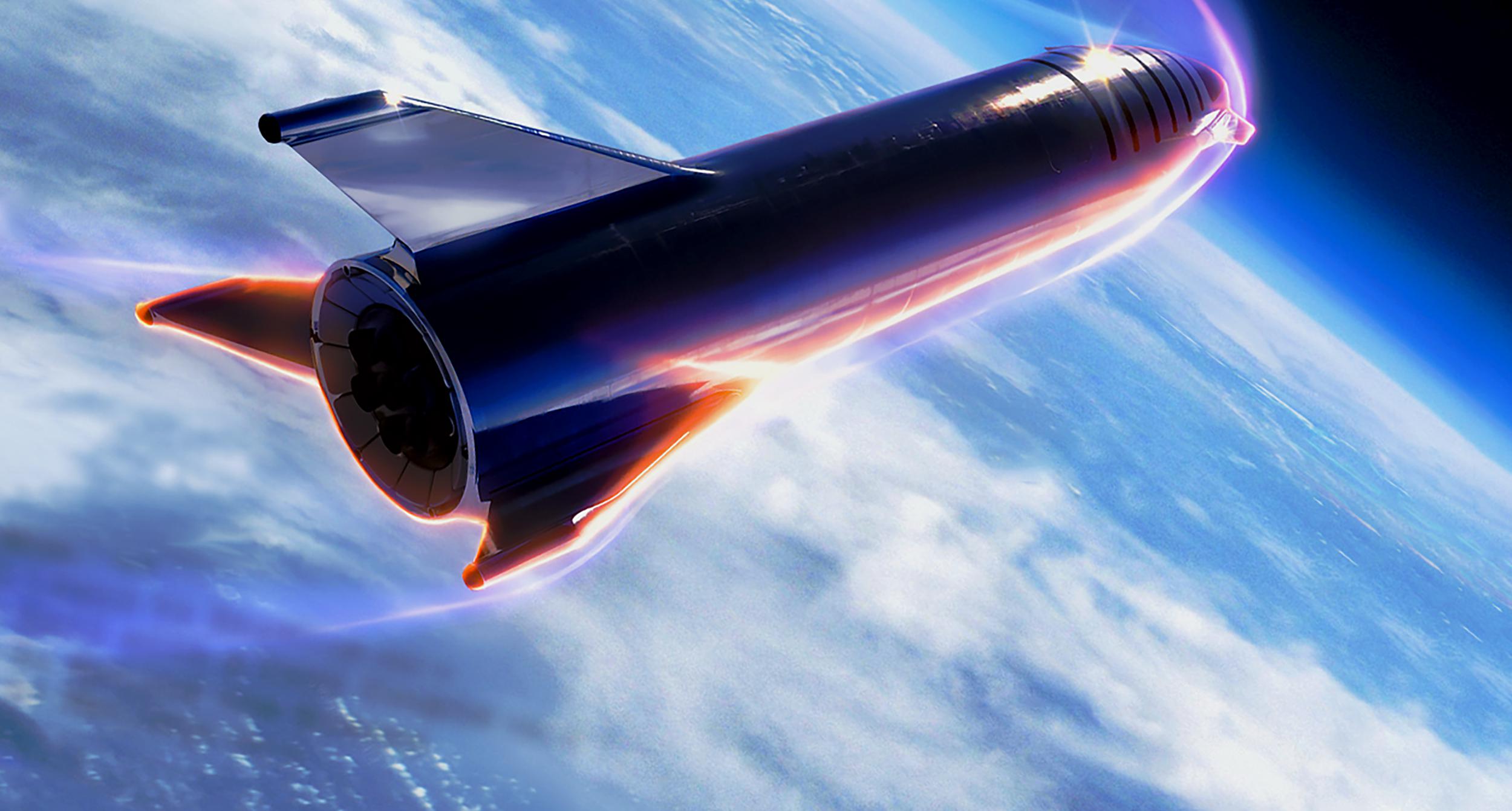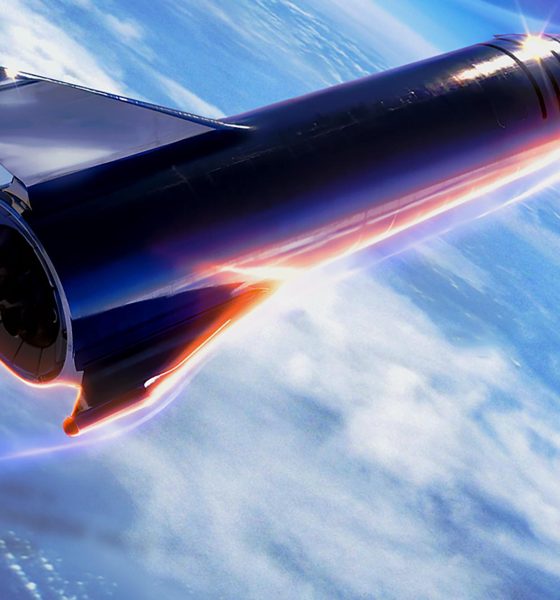

News
SpaceX CEO Elon Musk teases Starship flight debut details, reveals presentation date
Speaking on August 28th, CEO Elon Musk says that SpaceX’s first Starship flight test(s) could occur as early as October 2019, in line with a late-July estimate that pegged the milestone at 2-3 months out.
Under construction in Cocoa, Florida and Boca Chica, Texas, SpaceX’s duo of orbital-class Starship prototypes have made immense progress in the last two or so months, part of a (hopefully friendly) internal competition to be first to flight and first to orbit. Elon Musk has been planning to present an updated overview on the next-generation SpaceX launch vehicle, originally expected in August before a variety of factors pushed it into September. Musk says that presentation is now scheduled no earlier than (NET) September 28th.
Musk has previously described the highly-anticipated update as a technical overview of the decision-making process that has lead SpaceX to replace Starship’s composite design with stainless steel, among many other changes the rocket has undergone in the last 6-12 months. Aside from the obvious, Musk recently revealed that Starship’s fins/legs/wings also had to be modified from the tripod fin/canard setup shown in SpaceX’s September 2018 design update.
The first of Starship Mk1’s (Texas) landing fins or canards arrived in Boca Chica in mid-August, followed soon after by what appeared to be header tanks (smaller internal tanks for landing propellant), and what has been described as “the guts of Starship”. Although SpaceX’s Starship Mk2 (Cocoa, FL) team was forced to pause work for several days as a result of the incoming Hurricane Dorian, work in Texas has proceeded unabated and continues around the clock with two or three shifts.
Starship Mk1’s triple-Raptor thrust structure was installed inside the vehicle’s tank section several weeks ago. Workers are now in the process of installing the Starship’s common bulkhead, a dome that will separate its liquid oxygen and methane tanks, and a third and final dome – the top of Starship’s LOx tank – is in the late stages of assembly.
In short, SpaceX’s Mk1 Starship continues to maintain an absolutely blistering pace of progress and could very well be ready in time for Musk’s proposed October flight debut, despite the fact that the CEO is more than a little infamous for his near-impossible deadlines and schedules.
Starship’s first flight
Musk says that Starship’s first flight – likely featuring the Mk1 vehicle – or a subsequent test flight could see the spacecraft prototype reach an altitude of 20 km (12 mi/~64,000 ft), indicating that SpaceX plans to transition into high-altitude, high-velocity testing as soon as possible.
Incredibly, Musk also stated that Starship’s inaugural orbital launch attempt could come “shortly thereafter”, an attempt that – according to previous statements from Musk – would demand the completion of the first Super Heavy booster, as well as the 20+ Raptor engines it would require. Musk estimated that Raptor will reach orbital flight-readiness as early as October or November, while an orbital flight test before the end of 2019 would technically mesh with his late-July estimate of December/January.
Whether or not SpaceX manages to achieve that almost unbelievably ambitious target, it seems entirely plausible that – barring unforeseen developments – Starship Mk1 and Mk2 will be ready for flight testing well before the end of 2019. Stay tuned for updates as Starship assembly continues in Texas and Florida.
Check out Teslarati’s Marketplace! We offer Tesla accessories, including for the Tesla Cybertruck and Tesla Model 3.

Elon Musk
SpaceX issues statement on Starship V3 Booster 18 anomaly
The incident unfolded during gas-system pressure testing at the company’s Massey facility in Starbase, Texas.

SpaceX has issued an initial statement about Starship Booster 18’s anomaly early Friday. The incident unfolded during gas-system pressure testing at the company’s Massey facility in Starbase, Texas.
SpaceX’s initial comment
As per SpaceX in a post on its official account on social media platform X, Booster 18 was undergoing gas system pressure tests when the anomaly happened. Despite the nature of the incident, the company emphasized that no propellant was loaded, no engines were installed, and personnel were kept at a safe distance from the booster, resulting in zero injuries.
“Booster 18 suffered an anomaly during gas system pressure testing that we were conducting in advance of structural proof testing. No propellant was on the vehicle, and engines were not yet installed. The teams need time to investigate before we are confident of the cause. No one was injured as we maintain a safe distance for personnel during this type of testing. The site remains clear and we are working plans to safely reenter the site,” SpaceX wrote in its post on X.
Incident and aftermath
Livestream footage from LabPadre showed Booster 18’s lower half crumpling around the liquid oxygen tank area at approximately 4:04 a.m. CT. Subsequent images posted by on-site observers revealed extensive deformation across the booster’s lower structure. Needless to say, spaceflight observers have noted that Booster 18 would likely be a complete loss due to its anomaly.
Booster 18 had rolled out only a day earlier and was one of the first vehicles in the Starship V3 program. The V3 series incorporates structural reinforcements and reliability upgrades intended to prepare Starship for rapid-reuse testing and eventual tower-catch operations. Elon Musk has been optimistic about Starship V3, previously noting on X that the spacecraft might be able to complete initial missions to Mars.
Investor's Corner
Tesla analyst maintains $500 PT, says FSD drives better than humans now
The team also met with Tesla leaders for more than an hour to discuss autonomy, chip development, and upcoming deployment plans.

Tesla (NASDAQ:TSLA) received fresh support from Piper Sandler this week after analysts toured the Fremont Factory and tested the company’s latest Full Self-Driving software. The firm reaffirmed its $500 price target, stating that FSD V14 delivered a notably smooth robotaxi demonstration and may already perform at levels comparable to, if not better than, average human drivers.
The team also met with Tesla leaders for more than an hour to discuss autonomy, chip development, and upcoming deployment plans.
Analysts highlight autonomy progress
During more than 75 minutes of focused discussions, analysts reportedly focused on FSD v14’s updates. Piper Sandler’s team pointed to meaningful strides in perception, object handling, and overall ride smoothness during the robotaxi demo.
The visit also included discussions on updates to Tesla’s in-house chip initiatives, its Optimus program, and the growth of the company’s battery storage business. Analysts noted that Tesla continues refining cost structures and capital expenditure expectations, which are key elements in future margin recovery, as noted in a Yahoo Finance report.
Analyst Alexander Potter noted that “we think FSD is a truly impressive product that is (probably) already better at driving than the average American.” This conclusion was strengthened by what he described as a “flawless robotaxi ride to the hotel.”
Street targets diverge on TSLA
While Piper Sandler stands by its $500 target, it is not the highest estimate on the Street. Wedbush, for one, has a $600 per share price target for TSLA stock.
Other institutions have also weighed in on TSLA stock as of late. HSBC reiterated a Reduce rating with a $131 target, citing a gap between earnings fundamentals and the company’s market value. By contrast, TD Cowen maintained a Buy rating and a $509 target, pointing to strong autonomous driving demonstrations in Austin and the pace of software-driven improvements.
Stifel analysts also lifted their price target for Tesla to $508 per share over the company’s ongoing robotaxi and FSD programs.
Elon Musk
SpaceX Starship Version 3 booster crumples in early testing
Photos of the incident’s aftermath suggest that Booster 18 will likely be retired.

SpaceX’s new Starship first-stage booster, Booster 18, suffered major damage early Friday during its first round of testing in Starbase, Texas, just one day after rolling out of the factory.
Based on videos of the incident, the lower section of the rocket booster appeared to crumple during a pressurization test. Photos of the incident’s aftermath suggest that Booster 18 will likely be retired.
Booster test failure
SpaceX began structural and propellant-system verification tests on Booster 18 Thursday night at the Massey’s Test Site, only a few miles from Starbase’s production facilities, as noted in an Ars Technica report. At 4:04 a.m. CT on Friday, a livestream from LabPadre Space captured the booster’s lower half experiencing a sudden destructive event around its liquid oxygen tank section. Post-incident images, shared on X by @StarshipGazer, showed notable deformation in the booster’s lower structure.
Neither SpaceX nor Elon Musk had commented as of Friday morning, but the vehicle’s condition suggests it is likely a complete loss. This is quite unfortunate, as Booster 18 is already part of the Starship V3 program, which includes design fixes and upgrades intended to improve reliability. While SpaceX maintains a rather rapid Starship production line in Starbase, Booster 18 was generally expected to validate the improvements implemented in the V3 program.
Tight deadlines
SpaceX needs Starship boosters and upper stages to begin demonstrating rapid reuse, tower catches, and early operational Starlink missions over the next two years. More critically, NASA’s Artemis program depends on an on-orbit refueling test in the second half of 2026, a requirement for the vehicle’s expected crewed lunar landing around 2028.
While SpaceX is known for diagnosing failures quickly and returning to testing at unmatched speed, losing the newest-generation booster at the very start of its campaign highlights the immense challenge involved in scaling Starship into a reliable, high-cadence launch system. SpaceX, however, is known for getting things done quickly, so it would not be a surprise if the company manages to figure out what happened to Booster 18 in the near future.








